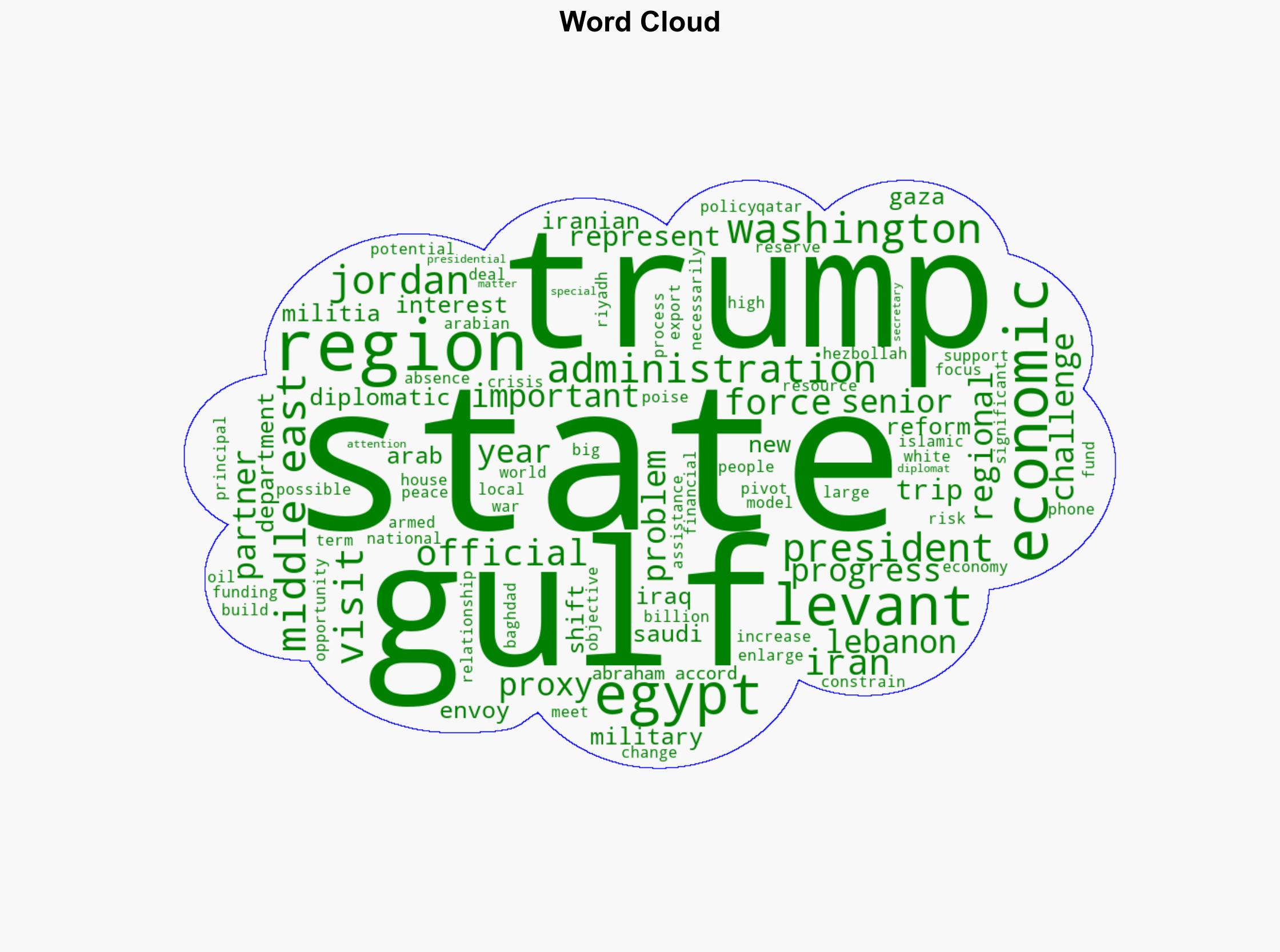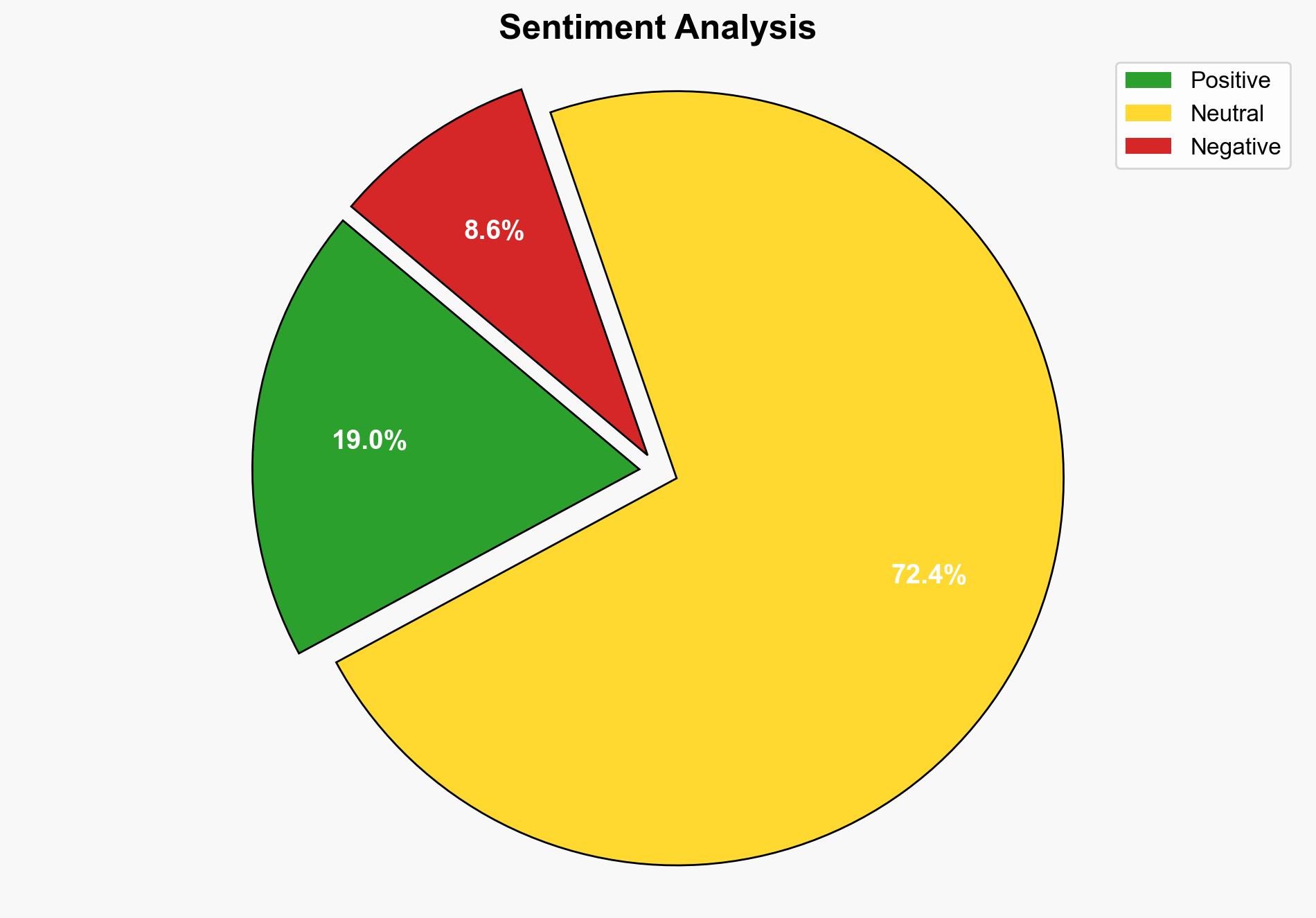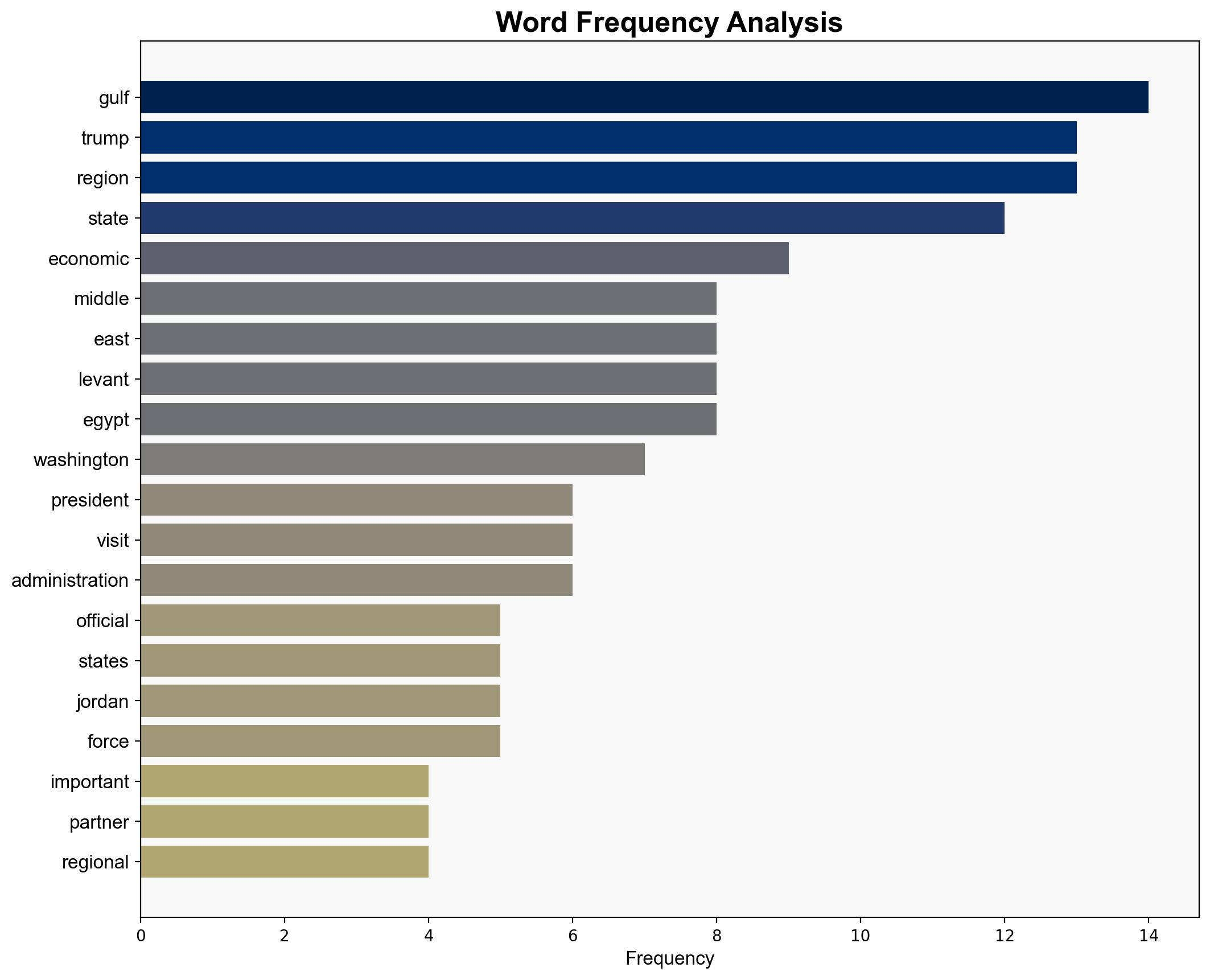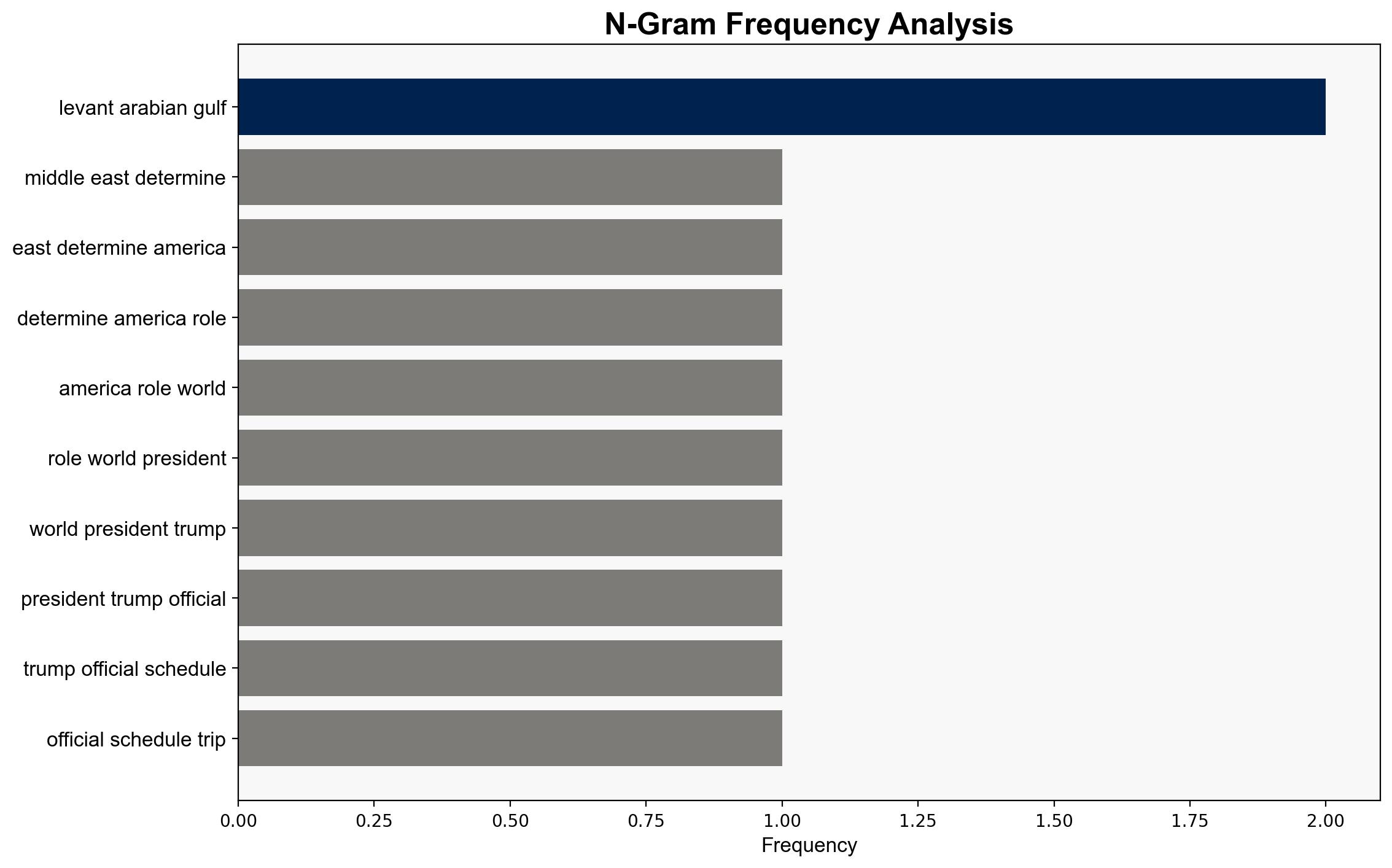Trumps Pivot To The Gulf – Hoover.org
Published on: 2025-09-09
Intelligence Report: Trumps Pivot To The Gulf – Hoover.org
1. BLUF (Bottom Line Up Front)
The strategic judgment suggests that the pivot to the Gulf represents a transactional shift in U.S. foreign policy, emphasizing economic partnerships over traditional alliances. The hypothesis that this shift is primarily driven by economic interests and the rise of Gulf states as regional powerhouses is better supported. Confidence level: Moderate. Recommended action: Strengthen diplomatic and economic ties with Gulf states while monitoring potential destabilization in the Levant.
2. Competing Hypotheses
1. **Economic-Driven Strategy Hypothesis**: The pivot to the Gulf is primarily driven by economic interests, focusing on leveraging the Gulf’s economic growth and technological advancements to benefit U.S. economic and strategic interests.
2. **Geopolitical Realignment Hypothesis**: The shift represents a broader geopolitical realignment, aiming to counterbalance Iranian influence and support the Abraham Accords by prioritizing relationships with Gulf states over traditional allies like Egypt and Jordan.
Using ACH 2.0, the Economic-Driven Strategy Hypothesis is more supported due to the emphasis on economic dividends and technological exports in the source text, whereas the Geopolitical Realignment Hypothesis lacks direct evidence in the provided snippet.
3. Key Assumptions and Red Flags
– Assumptions:
– Economic interests are a primary driver of U.S. foreign policy.
– Gulf states are reliable partners for long-term strategic goals.
– Red Flags:
– Potential over-reliance on Gulf states could lead to neglect of traditional allies.
– The assumption that economic growth in the Gulf will remain stable and beneficial for U.S. interests.
– Missing Data:
– Detailed analysis of how this pivot affects U.S. relations with non-Gulf Middle Eastern countries.
4. Implications and Strategic Risks
– **Economic Implications**: Strengthened economic ties with Gulf states could boost U.S. exports, particularly in technology sectors.
– **Geopolitical Risks**: Potential alienation of traditional allies like Egypt and Jordan could destabilize existing alliances and create power vacuums.
– **Cybersecurity Threats**: Increased technology exports to the Gulf may raise cybersecurity risks if not properly managed.
– **Regional Instability**: The focus on the Gulf might exacerbate tensions in the Levant, leading to increased instability.
5. Recommendations and Outlook
- Enhance diplomatic engagement with both Gulf and non-Gulf Middle Eastern countries to maintain a balanced regional approach.
- Implement robust cybersecurity measures to protect technology exports.
- Scenario Projections:
- Best Case: Strengthened economic ties lead to regional stability and increased U.S. influence.
- Worst Case: Alienation of traditional allies leads to regional instability and reduced U.S. influence.
- Most Likely: Economic benefits are realized, but geopolitical tensions persist.
6. Key Individuals and Entities
– Donald Trump
– Saudi Arabia
– United Arab Emirates
– Egypt
– Jordan
7. Thematic Tags
national security threats, cybersecurity, counter-terrorism, regional focus





